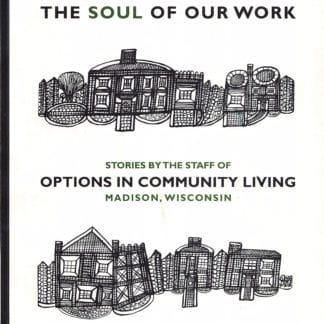Deinstitutionalization: Do We Still Know How to Fail After All These Years?
A MULTICOMPONENT APPROACH TO ACHIEVING FAILURE IN DEINSTITUTIONALIZATION:
A PLANNER’S GUIDE TO PREVENTION
John O’Brien
April 1977 and Aug. 2011
My friend Tom Kohler dusted off and sent me an extra copy he found of a yellowing booklet called Way Out, pub- lished in 1979 by the great advocacy pioneer Lotte Moise from her family’s print shop in Fort Bragg, California as part of her effort to influence the then raging debate over the institutionalization of people with disabilities. It included this little essay, written in 1977. At the time I was at work on efforts to make institutions unnecessary both for people with developmental disabilities and people who wound up spending a lot of their lives in psychiatric facilities. Accordingly, this essay considers how to fail with both populations.
Because making and distributing pdf files is pretty easy, I thought to republish it, 35 years later, both as a matter of slight historical interest and to offer a chance to think about which of the mechanisms for failure recommended 35 years ago still have legs and what new strategies for organizing misery that Wormwood and I should consider recommending if we got the job today. I have slightly adjusted the language so as not to distract readers with refer- ences to “handicap” and “mental retardation”. I leave it to you to replace the buzz words of that day with contem- porary hyphenated shibboleths. Choose among: “person-centered”,”self-directed”, “evidence-based” and “outcome- oriented” or any combination, as it pleases you.
Though the work of replacing institutions remains unfinished, especially counting all of the people in nursing homes and the variety of privately operated facilities and “campuses” that mimic the essence of institutional segre- gation and control with nicer buildings and trendier wardrobes for inmates and staff, the urgency that animated the 70’s and the subsequent heat seems to have gone from the institution question except when die-hard advocates for segregation and control feel threatened by the possible closure of a facility and rise up to save it (almost always successfully and typically in the name of “choice”).
Both Wormwood and I underestimated two developments: the great power of reproducing institutional conditions in community settings by entangling services in a truly fiendish net of bureaucratic mechanisms to enforce compli- ance with myriad process details; and, the irony of the US Supreme Court protecting the rights of institutionalized people by enshrining the medical judgement of institutional staff as keeper of the institution’s door and endorsing the well-worn dodge of deliberate progress as the pace of institutional de-population.
I remain grateful to C.S.Lewis and Wormwood’s diabolical mentor, Screwtape, for loan of the sensibility of the essay.
John O’Brien
August 2011



